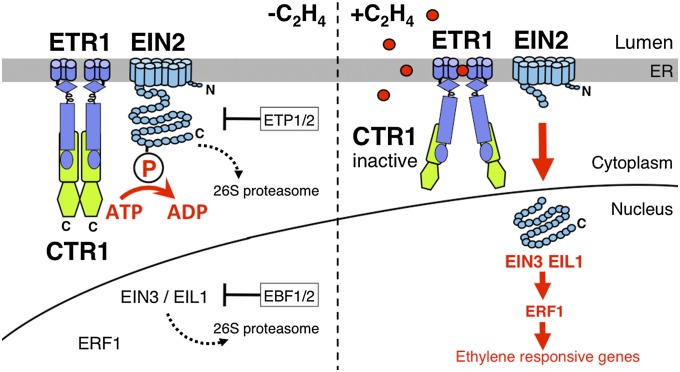Fig. 4.
Model of ethylene signaling. In the absence of ethylene (Left), the ethylene receptors (e.g., ETR1) at the ER membrane activate the CTR1 protein kinase, a dimer (42), which phosphorylates the C-terminal domain of EIN2, preventing its nuclear localization. Without ethylene, EIN2 is targeted for 26S proteasomal degradation by F-box proteins ETP1/2 (16). Transcription factors EIN3/EIL1 are also targeted for degradation by F-box proteins EBF1/2 (17). In the presence of ethylene (Right), the receptors are inactivated and therefore the CTR1 kinase is no longer active. The absence of phosphorylation on EIN2 results in EIN2 C terminus being cleaved and localizing to the nucleus where it can activate the downstream transcriptional cascade.

